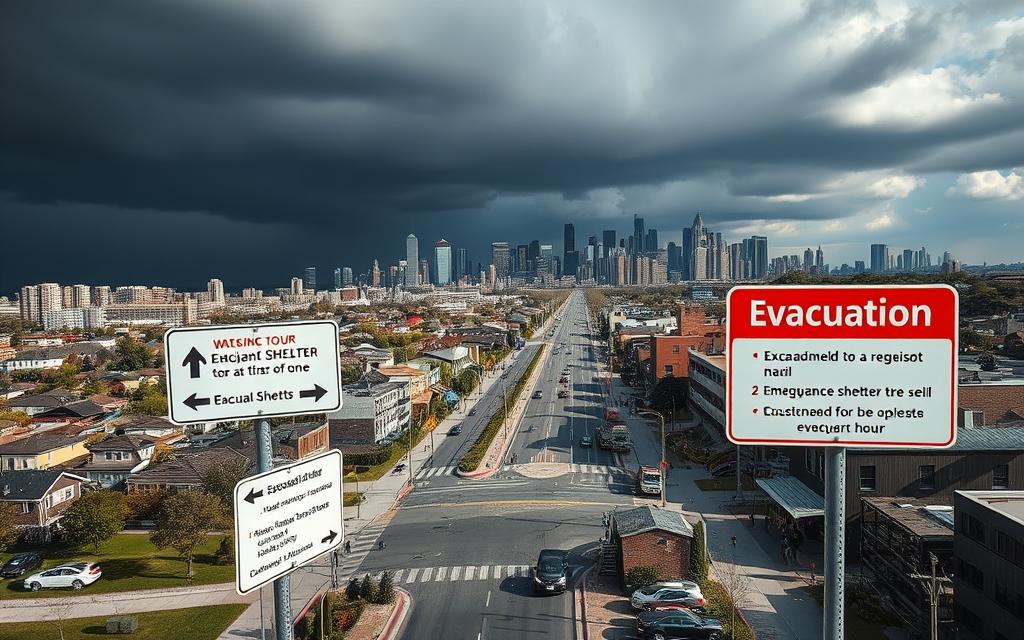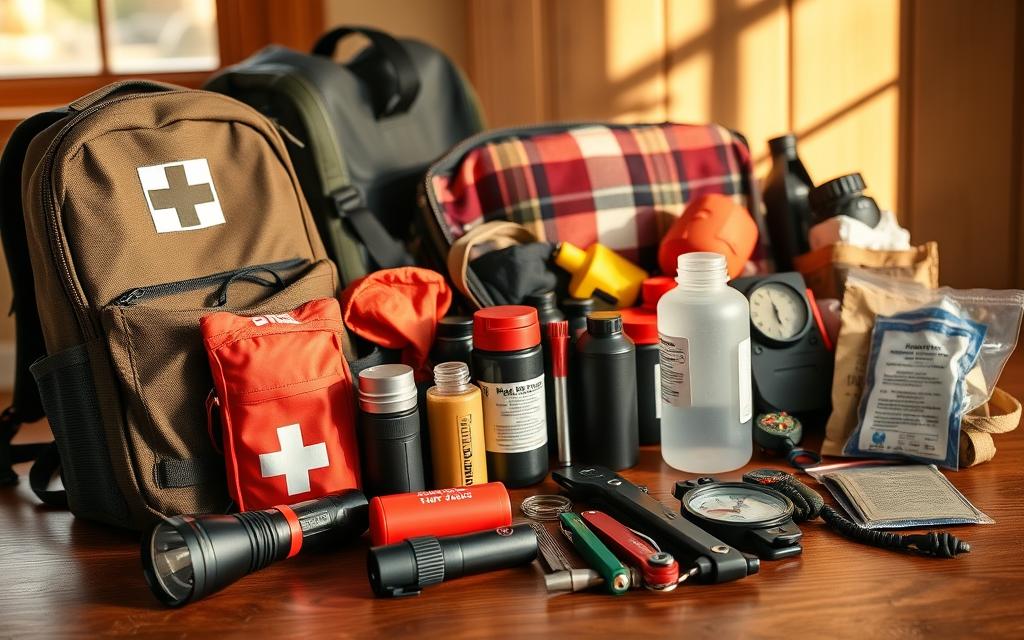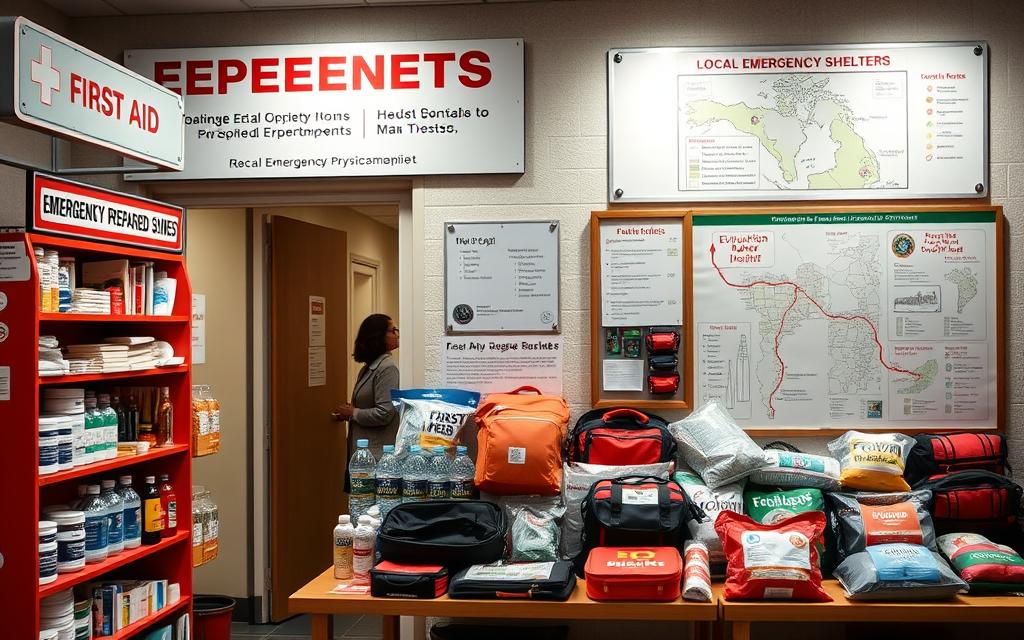Unexpected events can disrupt lives in moments. Being ready isn’t just about having supplies—it’s about creating clear steps to keep loved ones safe. Whether you’re safeguarding your home or business, a proactive approach makes all the difference.
Organizations like FEMA and the American Red Cross stress the value of practice and teamwork. Assign roles to household members, choose meeting spots, and establish communication methods. This ensures everyone knows their responsibilities during crises.
This guide covers three essentials: identifying risks in your area, building a step-by-step strategy, and assembling critical tools. You’ll learn how to prepare for scenarios like fires, floods, or severe weather—even if they seem unlikely where you live.
Why does this matter? Over 60% of Americans aren’t fully prepared for emergencies, according to national surveys. Simple actions today protect your property, pets, and community tomorrow. Let’s explore practical solutions that work for all lifestyles and locations.
Understanding the Importance of Disaster Planning
Emergencies don’t announce their arrival—they strike when least expected. A well-crafted strategy ensures your household or business can respond swiftly when threats emerge. This isn’t just about reacting; it’s about creating resilience through smart preparation.

Identifying Common Emergency Scenarios
Every home and workplace faces unique risks. For families, home fires account for 74% of civilian fire deaths according to emergency management research. Businesses might grapple with floods damaging equipment or hurricanes disrupting operations. Even “low-risk” areas face severe weather like ice storms or wildfires.
Recognizing Regional Risks and Hazards
Your location shapes your preparedness needs. Coastal towns prioritize tsunami evacuation routes, while Midwest communities focus on tornado shelters. Use tools like FEMA’s flood maps or local emergency alerts to identify top threats in your area. For example:
- Earthquake zones: Secure heavy furniture
- Wildfire regions: Clear dry vegetation
- Urban settings: Plan alternate commutes
Pro tip: Update your strategy seasonally. Winter brings power outages to snowy regions, while hurricane season demands coastal readiness. Tailoring your approach saves time—and lives—when minutes matter most.
Step-by-Step Disaster Planning for Your Home and Business
Creating a safety net for your family or team starts with actionable steps everyone can follow. Break tasks into clear roles while building backup communication channels. This approach reduces confusion when quick decisions matter.
Team Roles and Staying Connected
Assign specific jobs based on skills and location. For example:
- Who grabs the emergency kit?
- Who checks on elderly neighbors?
- Who handles animal care?
Text messages often work better than calls during network congestion. Share contact details with schools, workplaces, and relatives. Pro tip: Designate an out-of-town contact to relay updates if local lines fail.

Smart Exit Strategies and Safe Zones
Map two escape routes from every room. Businesses should post exit diagrams near elevators and stairwells. Identify shelters within 15 miles—school gyms, community centers, or hotels often serve this role. Keep car gas tanks half-full for sudden evacuations.
Custom Support for Vulnerable Groups
Adjust checklists for those needing extra help. Include:
- 7-day medication supplies
- Battery-powered mobility devices
- Pet carriers and vaccination records
Many shelters don’t accept animals, so research pet-friendly options ahead of time. Update arrangements every six months or after major life changes.
Remember: Practice your strategy through drills. Test flashlights, refresh perishables in kits, and confirm shelter availability. Shared preparation strengthens both households and workplaces during tough moments.
Building Your Emergency Preparedness Toolkit
A well-stocked toolkit turns chaos into calm during emergencies. Whether you’re at home or work, having the right items within reach helps everyone stay safe and focused. Let’s break down what you need—and where to keep it.

Gathering Essential Supplies for Households and Businesses
Start with basics that last 72 hours. Every kit needs one gallon of water per person daily. Add nonperishable foods like energy bars or canned goods. Don’t forget a manual can opener!
First-aid kits should include bandages, antiseptics, and prescription meds. Flashlights with extra batteries are crucial for power outages. Businesses might add fire extinguishers or backup hard drives for critical data.
Creating Go Bags and Assembling Emergency Kits
Pack lightweight backpacks with must-haves for quick exits. Keep one by your bed, at work, and in your car. Include copies of IDs, insurance papers, and cash in small bills.
Customize kits for pets with extra food and leashes. Seniors may need hearing aid batteries or medical alert devices. Check expiration dates every six months—rotate water and snacks to keep them fresh.
Pro tip: Use clear bins labeled by room (kitchen, garage) for easy access. Color-code items for kids or team members to grab fast. Practice locating supplies during drills to build muscle memory.
Effective Disaster Planning Strategies and Tips
Strengthening your readiness requires ongoing effort and smart collaboration. Small tweaks to your approach can transform good preparation into life-saving action when crises arise.
Practice Makes Preparedness
Schedule drills every three months to keep responses sharp. Time how fast your household exits the home or workplace. Note bottlenecks—like jammed doors or missing flashlights—and fix them immediately.
- Role-play scenarios: power outages, sudden evacuations
- Update contact lists when phone numbers change
- Review meeting spots if roads become impassable
After each drill, ask: “What surprised us?” Adjust your strategy based on answers. A Colorado town reduced evacuation times by 40% after adopting annual flood simulations.

Build Stronger Safety Networks
Local programs amplify individual efforts. Sign up for alerts like Notify NYC to receive real-time updates on storms or road closures. Partner with neighbors to share generators, tools, or pet care during outages.
Businesses can join emergency management certifications to train staff in first aid or crisis communication. Libraries often host free workshops on creating go-bags or securing heavy furniture.
Pro tip: Swap surplus supplies with others. Extra batteries could trade for bottled water, strengthening community resilience. After a Missouri tornado, shared resources helped 50+ families rebuild faster.
Conclusion
Staying ahead of emergencies starts with action today. Whether protecting your family or workplace, a clear emergency plan builds confidence when challenges arise. By understanding local risks, designing step-by-step strategies, and maintaining updated kits, you create layers of safety that adapt to any situation.
Regular practice sharpens responses—schedule drills to test evacuation routes and communication methods. Partner with neighbors or colleagues to share resources like generators or animal care supplies, creating stronger community networks. Research-backed strategies from organizations like the National Academies show how real-time data integration improves responses to complex events like wildfires paired with power outages.
Review your approach every six months. Update contact lists, refresh emergency kits, and explore new tools like weather alert apps. Remember: preparedness isn’t about fear—it’s about empowerment. Start small: check smoke detectors tonight or bookmark local emergency management websites. Each step moves you closer to resilience.
Your effort today ensures safer tomorrows. Take charge, stay informed, and build a foundation that weathers life’s surprises.
